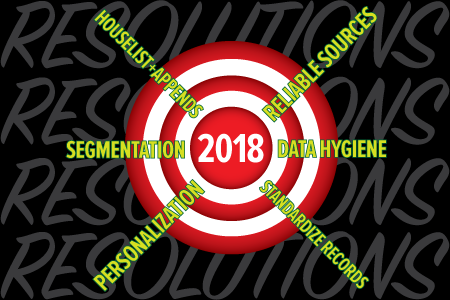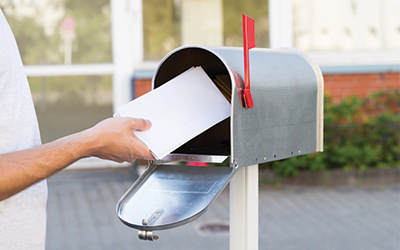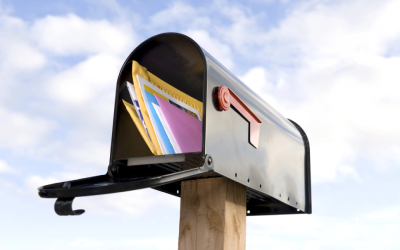There are Top 3 Lists, Top 5 Lists, Top 10 Lists, etc. of Resolutions For Direct Mail Marketers in 2018. To build better mailing lists in 2018 (and beyond) it is crucial that mailing list users move beyond mouthing the concepts to truly internalizing the practices. Following is a shortlist of “resolutions” that we believe will promote long-term success.
Make It Personal
Personalization initiates a conversation with credible evidence that a recipient has not been contacted at random. Properly executed it can promote a receptive mindset regarding your offer. Of course personalization is built on data that is current and as complete as possible. This may be customer data that is hopefully at your fingertips (more on this below). Such in-house data may still have gaps that can be filled using data append services.
Be sincere. You are not pinging your best friend, but rather reaching out to a potential customer. Re-consider using salutations like “Good Morning, Joe”. Imagine instead greeting your prom date’s parents; “Good evening Ms., Mrs. or Mr. Jones”. Personalization does not even have to use a name, per se, but may allude to past transactions or donations. Whichever you choose, remember that the burden of relevance is on the sender. The methodology and software to accomplish appropriate personalization is ubiquitous. Use it.
Your House List As Home Base
There’s no place like Home. So it follows that better mailing lists can begin with your own customers. You know each other through transactions and over time. There are ways to create a house list if you don’t already have one. Spreadsheet applications like Microsoft Excel, email list management applications (Constant Contact, Mailchimp) or Customer Relationship Management software (HubSpot, Salesforce) can be used to gather and organize your contacts. This can yield your own mailing list of customers and leads and become the foundation of your direct mail marketing efforts. As mentioned earlier, missing data can be appended as needed, especially to enable multi-channel, personalized communications. A logical approach to expanding the pool is to find look-alike records among related external lists. In addition, exploration of propensity databases can further grow your audience.
Divide & Conquer
You can’t paint all customers and prospects with a broad brush. The range of prospects runs from hit-and-run browsers to long-term fans. Segment for success by organizing the data that is readily available; purchase history, record of inquiries (including abandoned carts), who your audience is, what they do, where they are, and any seasonal triggers. By utilizing an informed segmentation strategy, audience outreach will be more relevant and fruitful.
Keep It Clean
Undeliverable records are needlessly wasteful. Like fish, mailing list data does not age well. Even the best data needs continual maintenance and care. Be on the lookout for duplicate records and de-dupe the list. If your mailing is intended for a business audience, make sure consumer record information is not present, and vice versa. All mailing list data, house or external, should undergo NCOA (National Change Of Address) scrubbing at least once a quarter, preferably every 30 days. Based on Bureau of Labor Statistics data, the average person changes jobs ten to fifteen times during his or her career. Stuff happens. Families move. Companies change names, re-organize, or close altogether. The average “shelf life” of a record is shorter than you might think.
Standardize Your Data Records
Every list or set of data records should meet a set of well-defined data criteria. This is true whether developed internally or purchased. A “complete” B2B top contact record may look like this:
- First Name/Last Name
- Title
- Phone
- Street Address
- City, State, Postal Code
- UCC Filings
- NAICS/SIC Code
- Years in Business
- Revenues
- Number of Employees
- Website URL
If one or more of these data elements is absent, seek a top-notch data append service to scan your records and insert missing data.
Lateral Thinking May Be The Way Forward
Building a bigger, better mailing list has become more non-linear. In B2B direct marketing, financial lenders know low-hanging fruit may appear in unexpected places. When prospecting for commercial loan customers, they may begin their list-building process with UCC (Uniform Commercial Code) based records. These are great for getting the borrower/lender/collateral details of a loan transaction. But, to broaden the base for portfolio building, funders consider propensity. This anticipates borrowing needs that may arise due to a prospect’s profile or changing circumstances. A B2B loan marketing mailing list may include new business registrations, credit-challenged companies, merchant cash advance users, plus members of gender- and ethnic-specific business communities that would appreciate relevant offers.
Among B2C direct marketers, propensity already plays a large role in expanding a potential target audience. It is basically an if/then exercise. If people just got married, then they will need A, B, and C. If people purchase a home, or have a new baby, then X, Y, and Z will likely follow. But it’s not that simple. In 2018, so many situations, affiliations and identifications have undergone change. Traditions have been re-written. What is a couple? Is homeownership the grail? What defines a breadwinner? Ignore these tectonic shifts at your peril. Identifying an audience that reflects current reality requires a new vision and mindset, making the importance of informed targeting even greater. Fresh, unexpected data sources can help you grow better mailing lists.
Reliable Sources – Who ARE Those Guys?
The best marketing data partners actively maintain data freshness on a continuous basis. If you require granular detail for specialized markets, then an experienced, sophisticated supplier is for you. Also, a top mailing list broker will offer a reasonable guarantee of deliverability, with some provision for making good on returned mail. Cut rate vendors simply scrape data and assemble basic records of company information. Unless records include verified email and phone numbers (more work for the provider) the data is of low value as it will contain costly inaccuracies. Email lists need to be compliant with CAN-SPAM law and phone numbers with the National Do Not Call Registry. Set a high data standard, then hold your sources (and yourself) accountable to it.
Build better mailing lists starting now. For more information about all of the standards and practices discussed above, please call us at (914)948-8300. You may submit a request for data and information as well.




